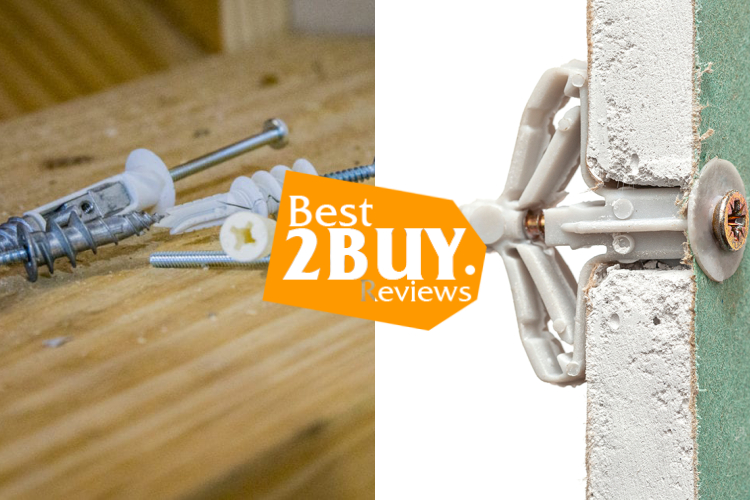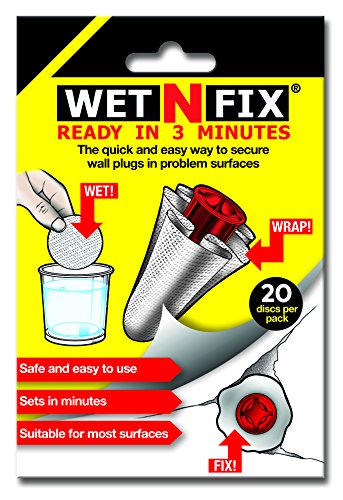Drywall Anchors: The Ultimate Guide

Drywall anchors play a crucial role in securely mounting objects on your walls, making them indispensable for both DIY enthusiasts and professional contractors. Having a good grasp of the various types of drywall anchors and their proper usage can help you save time, energy, and prevent any harm to your walls. This comprehensive guide will delve into all the essential information you require about drywall anchors.
What are Drywall Anchors?
Drywall anchors serve as tools employed for enhancing support when fastening items to drywall surfaces. Their purpose is to evenly disperse the object's weight over a broader surface, thus averting any risk of the anchor dislodging from the wall. In the absence of anchors, hefty items or those under continuous strain could potentially lead to the deterioration or fracturing of the drywall.
Types of Drywall Anchors
- Plastic Expansion Anchors: These represent the most prevalent drywall anchor type. Comprising a plastic sleeve and a screw, these anchors secure firmly in drywall by expanding the plastic sleeve when the screw is inserted. They are best suited for lightweight to medium-weight items.
- Toggle Bolts: Toggle bolts are ideal for supporting heavy objects. Consisting of two spring-loaded wings that collapse for insertion through a pre-drilled hole, they then expand within the wall, creating a robust anchor point. Toggle bolts excel in securing shelves, mirrors, or large artwork.
- Threaded Anchors: Threaded anchors, also known as self-drilling anchors, are engineered to handle medium to heavy loads. Their sharp threads enable direct screwing into drywall without the need for pre-drilling. Threaded anchors are commonly used for mounting curtain rods, towel racks, or wall-mounted TVs.
- Molly Bolts: Molly bolts are heavy-duty anchors designed for substantial weight-bearing. They feature a metal sleeve with a screw that expands the sleeve when tightened. Molly bolts are perfect for securely mounting heavy shelves, cabinets, or wall-mounted appliances.
- Plastic Ribbed Anchors: These anchors resemble plastic expansion anchors but are equipped with ribs on the sides to enhance grip. They are suitable for medium-weight items and are frequently employed for hanging picture frames, small shelves, or lightweight decorations.
Factors To Consider When Choosing Drywall Anchors
Weight Capacity
One of the most crucial factors to take into account is the weight capacity of a drywall anchor. This factor dictates the anchor's ability to support weight without compromising the wall's integrity. To make the right choice, determine the weight of the item you intend to hang and select an anchor capable of handling that load. Most drywall anchors come with clearly labeled weight ratings on their packaging, simplifying the process of choosing the suitable one for your requirements.
Anchor Type
Drywall anchors come in various types, each tailored to different purposes. Assess the nature of the object you wish to hang and opt for an anchor that aligns with both its weight and the level of support needed.
Wall Thickness
Consider the thickness of your drywall, which is another crucial aspect. Different anchors are designed to accommodate varying wall thicknesses. Standard drywall is generally around 1/2 inch thick, but variations of 3/8 inch and 5/8 inch exist. Ensure that the selected anchor is compatible with your drywall's thickness to guarantee a secure installation.
Installation Method
Contemplate the installation method required for the chosen anchor. Some anchors necessitate pre-drilling, whereas others can be directly inserted into the wall. Self-drilling anchors eliminate the need for pre-drilling, offering a more convenient and time-saving option. Nonetheless, if you intend to use toggle bolts or molly bolts, you'll need to drill holes prior to inserting the anchors.
Wall Material
While drywall anchors are intended for use with drywall, the condition of your walls is paramount. Older or damaged drywall may not provide adequate support for certain anchor types. In such instances, it is advisable to seek professional advice or explore alternative mounting solutions.
Ease of Removal
If you anticipate the need for future removal of the object or anchor, factor in the ease of removal. Plastic expansion anchors are generally easy to uninstall by simply unscrewing them. Conversely, toggle bolts and molly bolts may demand more effort to remove, as they expand within the drywall. Keep this in mind if you plan to frequently change or relocate mounted objects.
Cost
The cost of drywall anchors can vary based on the type, brand, and quantity you are seeking to purchase. On average, a package of basic plastic drywall anchors may range from $5 to $10 for a set of 50 to 100 anchors. Metal drywall anchors or specialized anchors may be slightly pricier, falling in the $10 to $20 range for a pack of 25 to 50 anchors. It's advisable to compare prices across different retailers or online stores to secure the best deal for the specific type of drywall anchors you require.
How to Use and Install Drywall Anchors
Install Drywall Anchors
- Select the appropriate anchor: Take into account the weight and dimensions of the item you intend to hang. Choose an anchor capable of supporting the load effectively.
- Locate a wall stud (if possible): Whenever feasible, opt to secure objects directly to a wall stud for maximum strength. Utilize a stud finder to pinpoint the stud hidden behind the drywall.
- Mark the installation point: Clearly mark the desired location for anchor placement, ensuring it is both level and at the desired height.
- Prepare for drilling (if required): Some anchors may necessitate pre-drilling. Refer to the manufacturer's guidelines to determine the correct drill bit size.
- Install the anchor: Insert the anchor into either the pre-drilled hole or directly into the drywall, depending on the type of anchor you're using.
- Secure the anchor: Utilize a screwdriver or drill to fasten the anchor until it sits flush with the wall.
- Attach your item: Once the anchor is securely in place, affix your object using the appropriate screws or hooks.
Tips for Using Drywall Anchors
- Be sure to adhere to the manufacturer's guidelines for each anchor type.
- When uncertain about the object's weight, opt for a more robust anchor to ensure safety.
- Refrain from excessively tightening the anchor, as this could potentially harm the drywall.
- If you encounter resistance when inserting the anchor, withdraw it and attempt a different location. It's possible you've encountered a stud or metal plate.
- For larger or heavier objects, evenly distribute the weight across multiple anchors to guarantee stability.
Drywall anchors are essential tools for individuals seeking to securely hang items on their walls. By familiarizing yourself with the various anchor types and adhering to correct installation procedures, you can guarantee the preservation of your walls and the secure placement of your possessions. Therefore, when you're prepared to hang a picture frame or install a shelf, always make sure to select the appropriate drywall anchor for the task.











